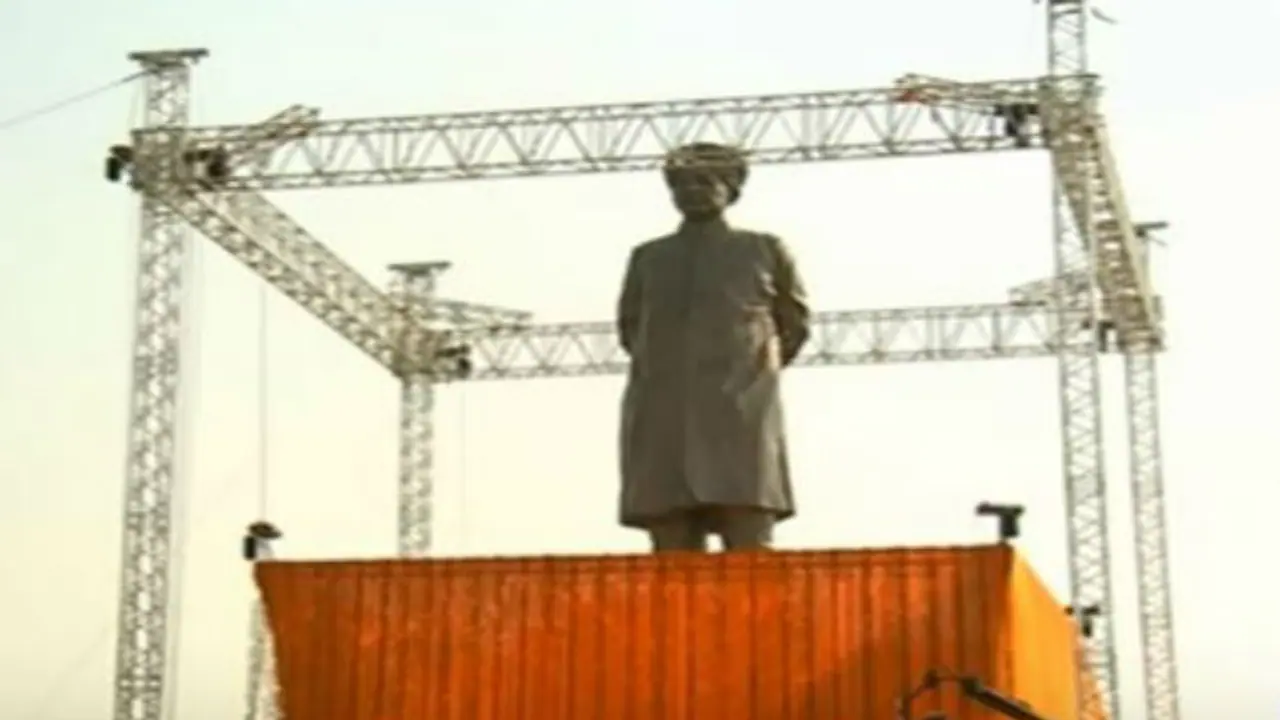Modi, by commemorating a peasant leader, has addressed the peasant discontent, and thrown a spanner in the political works of the Congress
New Delhi: On Tuesday, Prime Minister Narendra Modi unveiled the tallest statue of Haryana — that of peasant ideologue and Jat leader Deenbandhu Sir Chhotu Ram in Jat-dominated Rohtak’s Garhi Sampla village. The iconic peasant leader was born in that village.
Modi, by commemorating a peasant leader, has addressed the peasant discontent, and thrown a spanner in the political works of the Congress given that the region is known to have been a stronghold of former chief minister Bhupinder Singh Hooda.
Sir Chhotu Ram’s grandson, Chaudhary Birendra Singh, is already in the BJP fold, having shifted political loyalties just before the 2014 Lok Sabha elections when he deserted the Congress. He is minister of state (MoS), steel in Modi’s council of ministers.
Who is Deenbandhu Sir Chhotu Ram?
1. He was born as Ram Richpal on November 24, 1881. He died in 1945.
2. In pre-Independence India, he was one of the most influential peasant ideologues. His politics though was confined to Punjab.
3. He co-founded the Unionist Party in Punjab along with Sikandar Hayat Khan and others. It was a secular formation comprising Hindus, Sikhs and Muslims, but was formed to safeguard the interests of the landed gentry.
4. After the Unionist Party formed the government in Punjab post the 1935 provincial elections in colonial India, he became revenue minister.
5. As revenue minister, he brought changes in the law, stopping usury.
6. He can be credited with the Punjab Relief Indebtedness Act of 1934 and the Punjab Debtor's Protection Act of 1936, which saved the peasants from the clutches of the moneylenders and restored the right of land to the tiller.
7. He led a massive recruitment drive for the Army during World War I in modern Haryana region and during World War II across pre-Partition Punjab. His support of the British war effort during World War II is often seen as controversial as the Congress had given a call to not provide any help to the British war machine.
8. He opposed the idea of Pakistan. He formed a separate group of 13 members in the Punjab Assembly when most Muslim Unionists joined the Muslim League.
9. His death brought about the demise of the Unionist Party.
10. A patron of several Jat organisations, he established the Jat Sabha at Rohtak in 1912.
11. He was drawn to the Arya Samaj of Dayanand Saraswati and was close to Swami Shraddhanand.
12. Sir Chhotu Ram is an alumnus of St Stephen’s College, Delhi, and graduated with distinction in Sanskrit.
13. He gained LLB from Agra.
14. Sir Chhotu Ram joined the Congress in 1916.
15. He started the Jat Anglo-Sanskrit College in Rohtak in 1913.
16. He was awarded the title of ‘Rao Bahadur’.
17. Sir Chhotu Ram was knighted in 1937 and was called ‘Deenbandhu’.
18. Muslim Jats gave him the title of Rehbar-i-Azam (a great protector).
